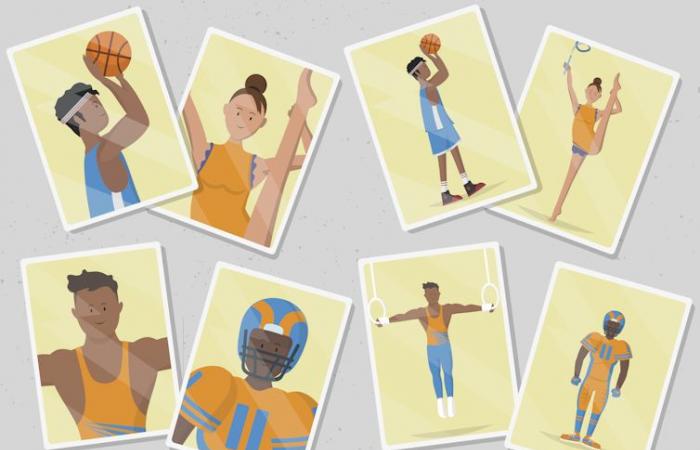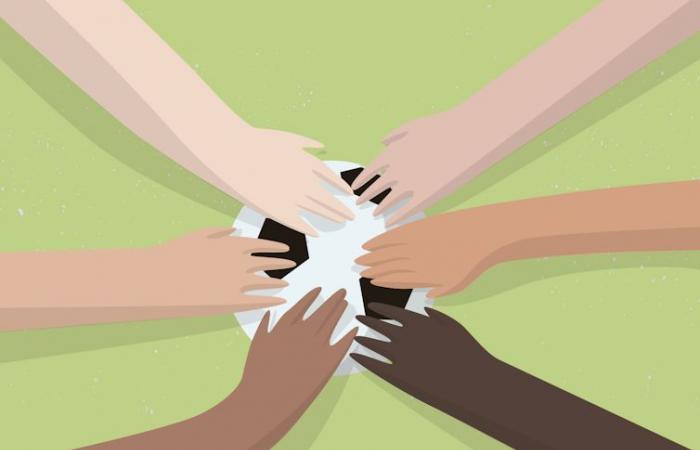Practicing sports has many physical and social benefits. This is almost obvious and supported by much scientific research. Exercising has been shown to strengthen the immune system, help regenerate muscle fibers, and reduce the risk of certain types of cancer, such as colon cancer. In addition, it improves brain function, which facilitates learning.
Competitive sport helps meet the World Health Organization’s recommendations on exercise and physical activity. This organization advises that young people ages 5 to 17 practice at least 60 minutes a day of moderate to vigorous physical activity. With only two physical education classes a week and little free play, sport is a good option to stay active.
The negatives: injuries on the rise
However, there are also negative effects of sport on physical and mental health. Injuries, exhaustion, and early abandonment are sometimes seen. A 2023 study by our research group found that 41% of almost 1,300 female basketball, soccer and volleyball players between the ages of 11 and 21 in Catalonia visited the doctor for sports injuries in one season. These values are similar to studies in Madrid and Castilla La Mancha.
To show other data, hospitals specialized in children and adolescents such as Sant Joan de Déu in Barcelona have seen a large increase in anterior cruciate ligament operations. Before the year 2000, they performed these surgeries a couple of times a year. Now, they make them at least three times a month. This problem is more common in girls. For every boy diagnosed, there are three girls with this injury. In addition, girls usually suffer these ruptures between the ages of 13 and 18, which increases the risk of subsequent injury. These injuries can take a year to recover from, so it is important to take them seriously.
À lire also: Are women and men injured in the same way in football?
Other very common injuries among young athletes include ankle sprains, hand and finger trauma, and back problems.
Worse basic physical condition and more sedentary lifestyle
Several factors explain this situation. There are more girls playing team sports than ever. Our young people are increasingly sedentary and have low motor education and poorer physical condition, which makes them more vulnerable to the specific demands of sport despite practicing sports activity a few days a week.
In Spain, furthermore, a model of early sports specialization is being imposed, focused on competition and with little space for recreational and multi-sport practices, ideal for early ages. This can be harmful.
The problems of early sports specialization
Although specializing at a young age is a route to sporting excellence in sports such as tennis, golf or swimming, it is not the only path. There is evidence to show that athletes with a multi-sport background have longer careers, play more games per season, and suffer fewer serious injuries in professional leagues like the NBA.
Recently, some examples have shown this other path to sporting success. Chelsea goalkeeper Katie Cox also plays basketball for the London Lions. Chase Budinger, after playing seven seasons in the NBA, has earned a place for the Paris 2024 Olympic Games in beach volleyball.
Generating social alarm about something as positive as practicing sports would be irresponsible. However, reducing the negative effects of youth sports is the responsibility of everyone involved. There are measures supported by scientific evidence that can be adopted and must be communicated to society.
Prevention strategies
We know that strategies such as performing adequate warm-ups, having good physical preparation, using protective material, controlling training loads, promoting good hydration and rest, and offering more comprehensive sports training can prevent between 40% and 60% of serious injuries. These measures also help avoid sports abandonment and health problems associated with competitive sports.
The project DREAM, led by our research group and funded by the European Union, seeks to promote good practices and propose solutions at three levels. First, educational interventions for coaches, athletes and families. Second, environmental interventions that include the dissemination of effective strategies to prevent injuries in daily life. And third, work with key actors in competitive sport to encourage the adoption of regulations that protect athletes.

Maximize the benefits of sport
Although sport offers numerous benefits for the physical and mental health of young people, it is crucial to address the associated risks. By implementing preventive strategies and balanced sports training, we can maximize its benefits and minimize its negative effects.
A comprehensive and collaborative approach is essential to ensure that sport is a truly healthy practice for young people. Only the adoption of these practices and the creation of regulations will ensure a safe and beneficial sporting environment for all our athletes in the future.
Because we want the end of the game to be full of laughter and joy, or tears of emotion, but never sadness, pain or frustration.








